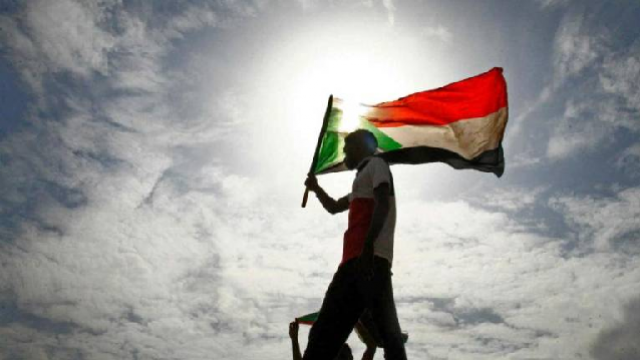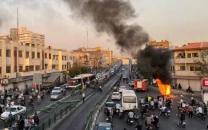Sudan: key dates in Darfur crisis
More than 2,300 killed in 2010, according to the UN

PHOTO: AFP
Khartoum agreed Tuesday to hand ousted autocrat Omar al-Bashir and others to the International Criminal Court for alleged war crimes in the conflict, a member of Sudan's ruling sovereign council said.
Tribal rebels in the Justice and Equality Movement (JEM) and the Sudan Liberation Movement/Army (SLM/SLA) take up arms against Khartoum, accusing it of marginalising the region.
Two soldiers killed as Sudan crushes revolt by security agents
On February 26, 2003, rebels take the town of Gulu in northern Darfur.
State-backed Arab militias called Janjaweed respond, leading to allegations of atrocities including murder, rape, looting and burning villages.
A hybrid African Union-United Nations force called UNAMID takes over from an African force which has been in the region since 2004.
In May 2008, more than 220 people are killed when JEM rebels thrust hundreds of kilometres (miles) from Darfur to Omdurman, just across the River Nile from the presidential palace in Khartoum.
The Hague-based International Criminal Court (ICC) issues an arrest warrant for then-president Bashir for war crimes and crimes against humanity in Darfur.
It issues another warrant the next year for genocide.
Late in 2010, after a lull in fighting which lasts several months, fighting resumes following the breakdown of an accord signed in 2006 with a faction of the SLM.
More than 2,300 killed in 2010, according to the UN.
In November 2011, Darfur's armed groups form an alliance -- the Sudanese Revolutionary Front -- committed to regime change in Sudan.
Sudan accuses newly independent South Sudan of working with the JEM, a charge denied by Juba, which Khartoum also accuses of backing armed revolts in its South Kordofan and Blue Nile regions.
In March 2014, the UN criticises restrictions imposed on humanitarian workers in Darfur and an increase in the number of displaced people.
The UN Security Council urges UNAMID to better protect the Darfur population. In October the UN criticises it for playing down alleged abuses by Sudanese forces.
In November, Bashir calls for a planned withdrawal of the force, with which Khartoum's relations have deteriorated, after the peacekeepers probe accusations of gang rape by Sudanese soldiers.
In a controversial April 2016 referendum the division of Darfur into five states is maintained.
The government in June declares a unilateral ceasefire.
In August, negotiations break down between Khartoum and rebels on a cessation of hostilities in Darfur, the Blue Nile and South Kordofan.
In early September Bashir says that peace has returned to Darfur.
That month rights group Amnesty International accuses Khartoum of carrying out several chemical attacks, killing civilians in the West of the country. Khartoum denies the charge.
In June 2017, the UN vastly scales down its force under pressure from Washington to slash the budget.
On April 11, 2019, Bashir is ousted by the military and detained, after four months of popular protests demanding he quit.
In August, new Sudanese authorities entrusted with preparing the way for a civilian regime vow to restore peace to conflict-ridden regions including Darfur.
In US, Sudan PM sees progress on terror list removal
On December 22, Sudanese prosecutors open a probe into crimes committed in Darfur since 2003, targeting officials from Bashir's regime.
In late December, nearly 50 people are killed over two days in tribal fighting at El Geneina, state capital of West Darfur.
On January 24, 2020, a coalition of nine rebel groups from Blue Nile and Darfur, but not South Kordofan, sign a preliminary agreement with the government after weeks of talks.



















COMMENTS
Comments are moderated and generally will be posted if they are on-topic and not abusive.
For more information, please see our Comments FAQ